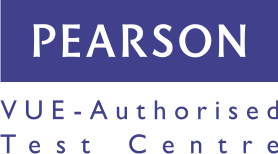O tym kursie
Ten kurs szkoleniowy uczy programistów umiejętności programowania potrzebnych do tworzenia aplikacji na platformę Windows przy użyciu języka C#. Podczas pięciodniowych zajęć studenci przeglądają podstawy struktury programu w języku C#, składnię języka oraz szczegóły implementacji, a następnie pogłębiają swoją wiedzę przez cały tydzień, tworząc aplikację, która wykorzystuje kilka funkcji .NET 6.0. Celem kursu jest zachowanie ducha kursu oficjalnego programu nauczania Microsoftu 20483, przy czym jest on w pełni zaktualizowany o najnowsze funkcje środowiska Visual Studio 2022 i możliwości platformy .NET 6.0.
Profil uczestników
Kurs jest przeznaczony dla doświadczonych programistów, którzy już posiadają doświadczenie w programowaniu w języku C, C++, JavaScript, Objective-C, Microsoft Visual Basic lub Java oraz rozumieją koncepcje programowania obiektowego. Kurs nie jest przeznaczony dla osób nowych w programowaniu; jest skierowany do profesjonalnych programistów z co najmniej jednym miesiącem doświadczenia w programowaniu w środowisku obiektowym. Osoby nowe w programowaniu powinny rozważyć kurs 55337AC - Wprowadzenie do programowania. Kurs 55337AC wykorzystuje język C# jako narzędzie do wprowadzenia do programowania ogólnie, podczas gdy ten kurs skupia się na samym języku C#, co czyni go doskonałym kursem uzupełniającym. Jeśli chcesz nauczyć się w pełni wykorzystywać język C#, to jest to kurs dla Ciebie.
Czego się nauczysz?
Moduł 1: Składnia C#
Microsoft .NET 6 dostarcza kompleksową platformę deweloperską, którą można użyć do budowania, wdrażania i zarządzania aplikacjami i usługami. Korzystając z .NET, można tworzyć wizualnie atrakcyjne aplikacje, umożliwiać płynną komunikację między granicami technologii oraz zapewniać obsługę szerokiego zakresu procesów biznesowych.
W tym module dowiesz się o niektórych podstawowych funkcjach dostarczanych przez .NET i Microsoft Visual Studio. Będziesz również uczyć się o niektórych podstawowych konstrukcjach języka C#, które umożliwią Ci rozpoczęcie pracy nad aplikacjami .NET.
Lekcje
Laboratorium: Składnia C#
Moduł 2: Koncepcje języka C#
Aplikacje często składają się z logicznych jednostek funkcjonalnych wykonujących określone funkcje, takie jak dostarczanie dostępu do danych lub uruchamianie pewnego przetwarzania logicznego. C# jest językiem obiektowym i używa koncepcji metod do enkapsulacji logicznych jednostek funkcjonalnych. Chociaż dobrą praktyką jest posiadanie metod, które wykonują tylko jedną rzecz, mogą być one tak proste lub skomplikowane, jak chcesz. Ważne jest również rozważenie, co dzieje się ze stanem Twojej aplikacji, gdy wystąpi wyjątek w metodzie.
Lekcje
Laboratorium: Koncepcje języka C#
Moduł 3: Struktury, kolekcje i zdarzenia w języku C#
Aby tworzyć efektywne aplikacje, najpierw musisz nauczyć się kilku podstawowych konstrukcji języka C#. Musisz wiedzieć, jak tworzyć proste struktury do reprezentowania elementów danych, z którymi pracujesz. Musisz wiedzieć, jak zorganizować te struktury w kolekcje, aby można było dodawać, pobierać i iterować po elementach. Wreszcie musisz wiedzieć, jak subskrybować zdarzenia, aby reagować na działania użytkowników.
Lekcje
Laboratorium: Struktury, kolekcje i zdarzenia w języku C#
Moduł 4: Klasy w języku C#
W tym module nauczysz się, jak używać interfejsów i klas do definiowania i tworzenia własnych niestandardowych, wielokrotnego użytku typów. Nauczysz się również, jak tworzyć i używać wyliczalnych kolekcji typów bezpiecznych.
Lekcje
Laboratorium: Klasy w języku C#
Moduł 5: Dziedziczenie w języku C#
W tym module nauczysz się, jak używać dziedziczenia do tworzenia hierarchii klas i rozszerzania typów .NET.
Lekcje
Laboratorium: Dziedziczenie w języku C#
Moduł 6: Wejście/Wyjście
W tym module nauczysz się, jak czytać i zapisywać dane za pomocą operacji wejścia/wyjścia systemu plików, jak serializować i deserializować dane do systemu plików oraz jak czytać i zapisywać dane do systemu plików za pomocą strumieni.
Lekcje
Laboratorium: Wejście/Wyjście
Moduł 7: Dostęp do bazy danych
W tym module nauczysz się, jak korzystać z Entity Framework i jak zapytać wiele rodzajów danych za pomocą Language-Integrated Query (LINQ).
Lekcje
Laboratorium: Dostęp do bazy danych
Moduł 8: Korzystanie z sieci
W tym module nauczysz się, jak używać klas żądania i odpowiedzi w przestrzeni nazw System.Net do bezpośredniego manipulowania zdalnymi źródłami danych. Dowiesz się również o REST i OData oraz krótko przyjrzymy się ASP.NET Core MVC.
Lekcje
Laboratorium: Korzystanie z sieci
Moduł 9: Interfejsy użytkownika graficznego
W tym module nauczysz się, jak używać Extensible Application Markup Language (XAML) i Windows Presentation Foundation (WPF) do tworzenia atrakcyjnych interfejsów użytkownika.
Lekcje
Laboratorium: Interfejsy użytkownika graficznego
Moduł 10: Wydajność aplikacji
W tym module nauczysz się, jak poprawić wydajność swoich aplikacji przez rozproszenie operacji na wiele wątków.
Lekcje
Laboratorium: Instalacja i konfiguracja systemu Windows 7
Moduł 11: Interoperacyjność C#
W tym module nauczysz się, jak współpracować z niezarządzanym kodem w swoich aplikacjach i jak zapewnić, że Twój kod zwalnia wszelkie niezarządzane zasoby.
Lekcje
Laboratorium: Interoperacyjność C#
Moduł 12: Projektowanie dla ponownego użycia
W tym module nauczysz się, jak korzystać z istniejących zestawów przez wykorzystanie refleksji oraz jak dodać dodatkowe metadane do typów i elementów członkowskich typów za pomocą atrybutów. Nauczysz się również, jak generować kod w czasie wykonania za pomocą Modelu Obiektowego Dokumentu Kodeksu (CodeDOM) oraz jak zarządzać zestawami .NET.
Lekcje
Laboratorium: Projektowanie dla ponownego użycia
Firma jest Autoryzowanym Ośrodkiem Szkoleniowym MICROSOFT Silver Learning
Możesz u nas podejść do egzaminu Pearson VUE
Spółka posiada wpis do ewidencji placówek niepublicznych Nr ew. ES.VIII.4320-6/p.n./2003 wydany z upoważnienia Prezydenta Miasta Łodzi
 |
 |
Zachęcamy do skorzystania z możliwości dofinansowania szkoleń oferowanych przez naszą firmę. Dostępne rozwiązania:
Skontaktuj się z nami, aby uzyskać więcej informacji. Oferujemy pełne wsparcie w tym procesie.
Zapraszamy!
|
|
|
Najbliższy termin: Prosimy o kontakt
Najbliższy termin: Prosimy o kontakt
Najbliższy termin: Prosimy o kontakt
Najbliższy termin: Prosimy o kontakt
Najbliższy termin: Prosimy o kontakt
Najbliższy termin: Prosimy o kontakt
Najbliższy termin: 13-11-2025 09:00
Najbliższy termin: Prosimy o kontakt
Najbliższy termin: Prosimy o kontakt
Najbliższy termin: 27-11-2025 09:00
Najbliższy termin: Prosimy o kontakt
Najbliższy termin: Prosimy o kontakt
